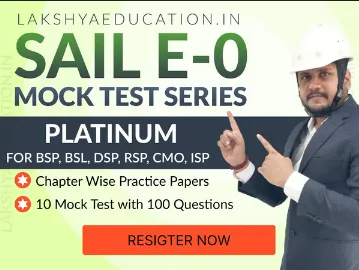General Knowledge > Polity
UNION AND STATE JUDICIARY OF INDIA MCQs
Total Questions : 603
| Page 1 of 61 pages
Answer: Option D. -> Appellate Jurisdiction
Answer: (d)
PIL (Public Interest Litigation) writ petition can be filed in Supreme Court under Article 32 only if a question concerning the enforcement of a fundamental right is involved.
Under Article 226, a writ petition can be filed in a High court whether or not a Fundamental Right is involved. Thus, it comes under appellate jurisdiction.
Answer: (d)
PIL (Public Interest Litigation) writ petition can be filed in Supreme Court under Article 32 only if a question concerning the enforcement of a fundamental right is involved.
Under Article 226, a writ petition can be filed in a High court whether or not a Fundamental Right is involved. Thus, it comes under appellate jurisdiction.
Answer: Option B. -> Examine the constitutional validity of the constitution
Answer: (b)
The ‘judicial review’ function of the Supreme Court means to examine the constitutional validity of laws.
Judicial review is the doctrine under which legislative and executive actions are subject to review (and possible invalidation) by the judiciary.
Answer: (b)
The ‘judicial review’ function of the Supreme Court means to examine the constitutional validity of laws.
Judicial review is the doctrine under which legislative and executive actions are subject to review (and possible invalidation) by the judiciary.
Answer: Option A. -> The President
Answer: (a)Judges in a High Court are appointed by the President of India in consultation with the Chief Justice of India and the governor of the state.
Answer: (a)Judges in a High Court are appointed by the President of India in consultation with the Chief Justice of India and the governor of the state.
Answer: Option C. -> One half of the total strength of the Supreme Court
Answer: (c)
Court’s advisory jurisdiction may be sought by the President under Article 143 of the Constitution. This procedure is termed as “Presidential Reference” and is recognized as the ‘Advisory jurisdiction’ of the Court.
The minimum number of judges to sit on the Constitutional Bench or on Bench which gives its advisory opinion on the reference by the President must be one-half of the total strength of the Supreme Court.
Answer: (c)
Court’s advisory jurisdiction may be sought by the President under Article 143 of the Constitution. This procedure is termed as “Presidential Reference” and is recognized as the ‘Advisory jurisdiction’ of the Court.
The minimum number of judges to sit on the Constitutional Bench or on Bench which gives its advisory opinion on the reference by the President must be one-half of the total strength of the Supreme Court.
Answer: Option C. -> Judiciary
Answer: (c)Judiciary is the guardian of fundamental rights.
Answer: (c)Judiciary is the guardian of fundamental rights.
Question 6. The Constitution places the High Courts under the control of the Union in certain matters in order to keep them outside the range of regional politics. The Union exercises its control in the matters of:
- transfer of Judges from one High Court to another.
- being able, to establish a common High Court for two or more States.
- determining disputes as to age of High Court Judges.
Answer: Option A. -> I, II and III
Answer: (a)
Answer: (a)
Answer: Option A. -> Keshavananda Bharti’s Case
Answer: (a)
Answer: (a)
Answer: Option C. -> 3
Answer: (c)
Answer: (c)
Answer: Option D. -> original jurisdiction
Answer: (d)
original jurisdiction of the Supreme Court(Article 131): Supreme court has power to decide disputes · between the Government of India and one or more States · between the Government of India and any State or States on one side and one or more other States on the other · between two or more States.
Answer: (d)
original jurisdiction of the Supreme Court(Article 131): Supreme court has power to decide disputes · between the Government of India and one or more States · between the Government of India and any State or States on one side and one or more other States on the other · between two or more States.
Question 10. Which of the following statements is/are correct regarding writ of ‘prohibition’?
Select the correct answer using the codes given below.
- It is an order issued by the Higher Court commanding Lower Court to cease from proceeding in some matters not within its jurisdiction.
- This writ is available against a public officer even if he is not vested with judicial powers.
Select the correct answer using the codes given below.
Answer: Option C. -> 1 only
Answer: (c)
Writ of prohibition is not available against a public officer not vested with judicial or quasi judicial powers.
Answer: (c)
Writ of prohibition is not available against a public officer not vested with judicial or quasi judicial powers.
















